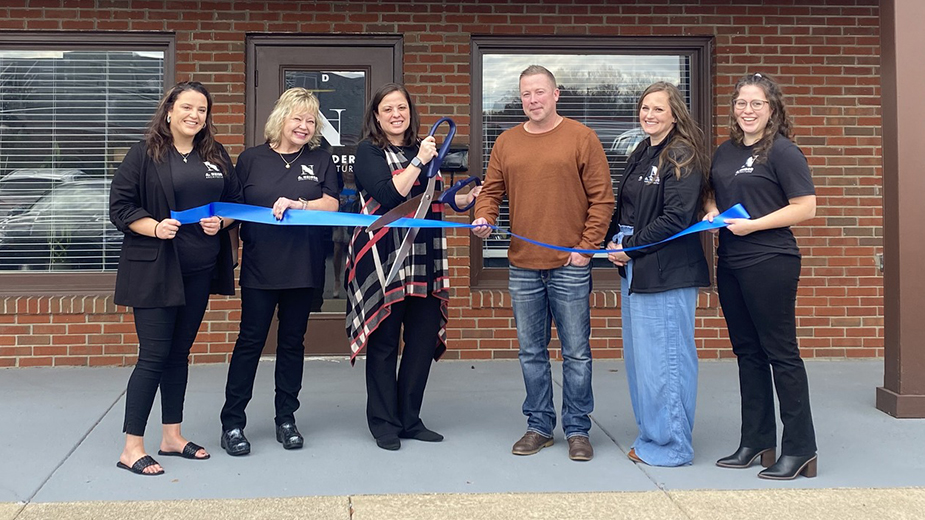Customer-Centric Content Leads to Better Engagement
YOUNGSTOWN, Ohio — In an increasingly digital world, the report of print’s death remains an exaggeration.
That’s not to say marketing teams are pulling the plug on digital. Far from it. But more companies are finding success in a blended, customer-centric content marketing strategy with digital and print platforms.
“Print is not dead. It’s coming back in vogue,” asserts Kathie Kinde Clark, content marketing strategist and manager at Stahls’ Transfer Express Inc. in Mentor. “So many people have shifted away from paper, that print cuts through the digital clutter now because it’s novel.”
Transfer Express manufactures custom heat-applied transfers used by athletic apparel dealers, T-shirt retailers and other customers in the United States and Canada. The company’s customers range from mom-and-pop shops to multimillion-dollar corporations, according to Clark.
Much of the company’s content marketing efforts are digital. Monthly webinars, weekly emails and videos, and four to five weekly blog posts engage customers with educational material from tips and tricks on how to use the company’s products, as well as how to market and grow their businesses, Clark says.
“It’s definitely a competitive advantage for us,” she continues. “We’ve seen our competition just flat out copy things that we’ve done.”
Over the last year, Transfer Express restructured the message of its content from strictly sales to a stronger focus on its customers’ needs, says its director of marketing, Will Reed. Since then, revenue that’s directly attributable to the customer-centric content increased.
Blog revenue is up 350% year-over-year, email is up 100%, “and we have 10% more new customers,” Reed says. Those efforts make up 2% of the company’s total revenue, up from “well under 1%” a year ago, he says.
Employing Google Analytics helps the marketing team at Transfer Express track specific data points to determine return on investment, Clark adds.
“That is direct attribution. We know they went from the blog to purchase something,” she says.
This year, the company is looking to invest in more advanced analytics and is exploring new ways to distribute its content, including a print magazine, Reed says.
As more audiences question the credibility of digital content, “I think there’s a movement back to traditional print journalism because there’s a trust to it,” he says. “It has that credibility that people are looking for again.”
Customer-focused messaging, multiplatform distribution and analytics tracking are content marketing strategies that Transfer Express and other marketers learn about and discuss at Content Marketing World, an annual seminar hosted by Content Marketing Institute in Cleveland. This year’s conference is scheduled for Sept. 4-7.
Some of the biggest trends that the institute, or CMI, is seeing in content marketing are the use of more dynamic digital content – such as videos and podcasts – as well as scaling back on an overload of content being distributed, which has created a “content shock,” says the institute’s marketing director, Cathy McPhillips.
“Messages can get lost because people are getting content from so many sources,” McPhillips says.
The Utah-based computer software company, Domo, reports that in 2017, Americans used 2.6 million gigabytes of data every minute, including 456,000 tweets, 3.6 million Google searches, 15.2 million texts and more than 103 million spam emails being sent.
Digital content, such as blogs, podcasts or videos, still play a big role in content marketing strategies because they’re better formats for visual learners and can be more relatable, McPhillips says. But for the last decade, as more marketers focused on publishing content and search engine optimization, or SEO, content shock became more apparent.
CMI now cautions those attending Content Marketing World to not publish just for publishing’s sake, but cut back and take the time to find out what content is relevant to customers, McPhillips says.
“There’s so much junk content out there,” she says. “Try not to be everything to everyone. Make your audience as small as possible, then knock it out of the park to that smaller group.”
That strategy is critical for driving engagements – or the number of people who take action on a piece of content – says Jeff Hedrich, president and principal of the Prodigal Co. in Boardman. Too many business owners put emphasis on platform before they’ve figured out their message, he explains, and many rely solely on digital because of lower costs.
While digital platforms alone provide a more cost-effective way to increase impressions – or the number of people who see the content – it is “here today, gone in about 10 minutes,” Hedrich continues.
Print content, when used in tandem with digital and television, has helped drive higher quarterly sales for Prodigal’s retail clients, he says.
“We can’t prove, technically speaking, that those viewers came to the store,” he says. “But we can tell you that when we marry the two together, almost always the results are better than if we had gone just digital.”
Prodigal produces “coffee-table quality” magazines with in-depth articles, local interest customer-centric content, which can be retained and read several times, he says. Among them is Capital Ideas Magazine, which the agency produces for Farmers National Bank, includes stories about local entrepreneurs.
“We know other entrepreneurs may or may not be interested right now in reading about Farmers National Bank,” he says. “But they want to read about Ed Muransky [chairman of the Muransky Companies] and how he does it. What were his challenges and opportunities?”
In the articles, readers learn that Farmers is one of Muransky’s key banking partners, which lends itself to the customer’s brand, he says.
Engaging content can help make the case that a company is more valuable to the reader without selling something. When a company only produces sales content, “Eventually people don’t listen anymore because they know that’s just a tactic,” Hedrich says.
Educating and entertaining an audience can help drive sales in the long run because it puts a company at the top of a customer’s mind when it’s time to make a purchase, the Content Marketing Institute’s McPhillips says. Focusing on the customer’s needs helps foster trust with a customer because the customer-centric content “is relative to their industry, but it’s not all about the company,” she says.
In 2015, the Lincoln Electric Co. in Cleveland launched ARC Magazine as a way to not only build such a relationship with the industry, but to promote welding as an occupation, says Lincoln’s director of marketing communications, Craig Coffey.
“We’re losing a lot of welders on an annual basis, about 50,000 to 60,000 [nationwide] every year,” Coffey says. “So we need to find a way to bring people back to welding.”
In addition to educational content about welding, ARC Magazine features stories that relate to people in the maker community, he says.
From celebrity interviews such as with “Parks and Recreation” star and carpenter, Nick Offerman, to features on organizations such as Motorcycle Missions, which uses custom bike builds as therapy for veterans and first responders recovering from PTSD, the content is engaging and relatable to the maker community at the same time, Coffey says.
“It allows us to be the brand that has a personality,” he says. “People engage with stories. It’s like we’re hardwired to react to storytelling, and that’s what content marketing is.”
ARC Magazine publishes 100,000 copies quarterly, most of which go to distributors of Lincoln Electric products. Another 15,000 are shipped directly to subscribers.
In addition to the print publication, much of ARC’s content is posted on its website and Facebook, including video versions of featured content.
Video allows ARC to tell a deeper story, Coffey says, but the video content always aligns with the magazine. Reception has been positive from end users and distributors, he says, and Lincoln Electric receives more interaction from readers with basic welding questions.
“It allows us to elevate readers’ knowledge without dumbing it down,” Coffey says.
“If we can entertain, educate and engage before we try to sell anything, then people receive that better. The immediate response tells us we’re on to something.”
Copyright 2024 The Business Journal, Youngstown, Ohio.



